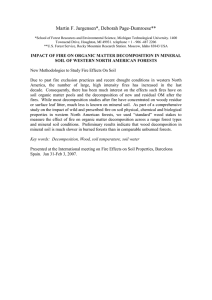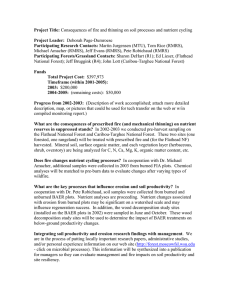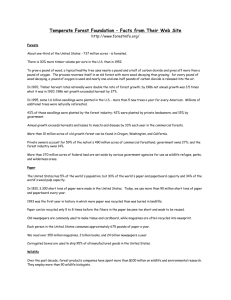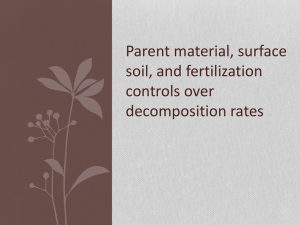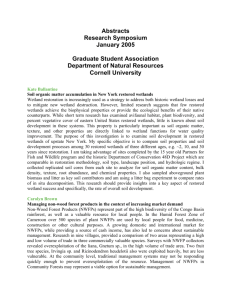Wood Decomposition in the Forest Floor and Mineral Soil after Fire
advertisement
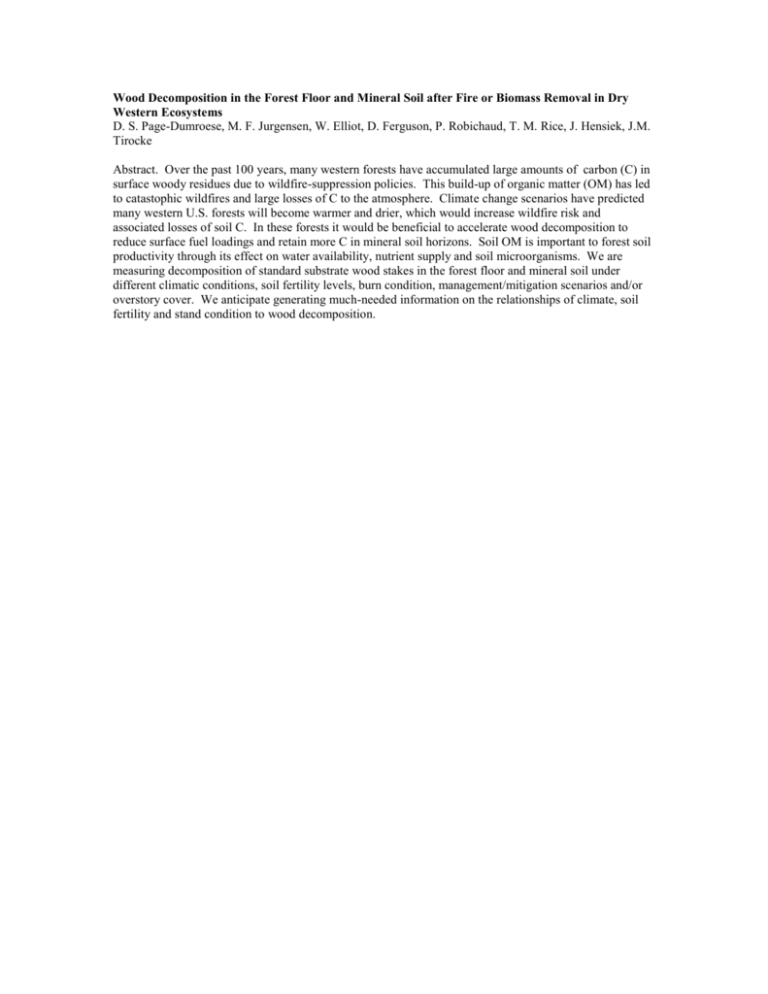
Wood Decomposition in the Forest Floor and Mineral Soil after Fire or Biomass Removal in Dry Western Ecosystems D. S. Page-Dumroese, M. F. Jurgensen, W. Elliot, D. Ferguson, P. Robichaud, T. M. Rice, J. Hensiek, J.M. Tirocke Abstract. Over the past 100 years, many western forests have accumulated large amounts of carbon (C) in surface woody residues due to wildfire-suppression policies. This build-up of organic matter (OM) has led to catastophic wildfires and large losses of C to the atmosphere. Climate change scenarios have predicted many western U.S. forests will become warmer and drier, which would increase wildfire risk and associated losses of soil C. In these forests it would be beneficial to accelerate wood decomposition to reduce surface fuel loadings and retain more C in mineral soil horizons. Soil OM is important to forest soil productivity through its effect on water availability, nutrient supply and soil microorganisms. We are measuring decomposition of standard substrate wood stakes in the forest floor and mineral soil under different climatic conditions, soil fertility levels, burn condition, management/mitigation scenarios and/or overstory cover. We anticipate generating much-needed information on the relationships of climate, soil fertility and stand condition to wood decomposition.
